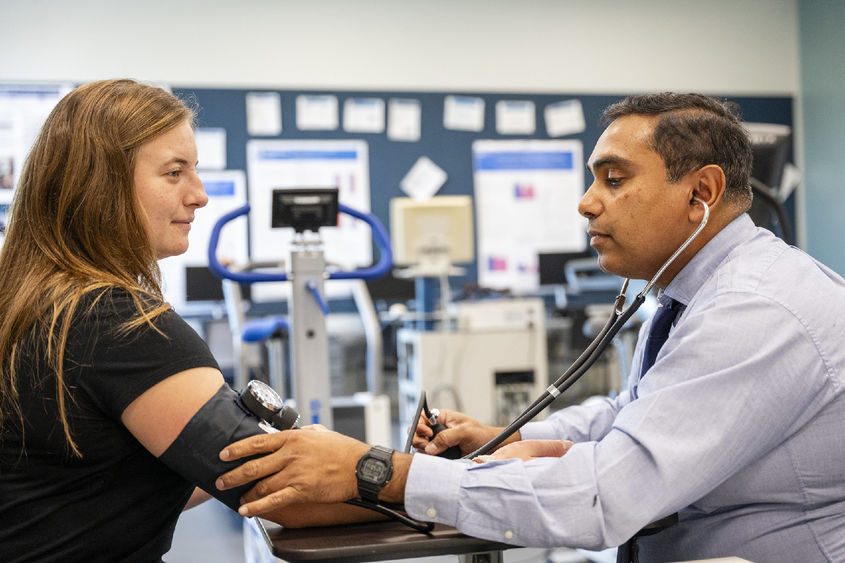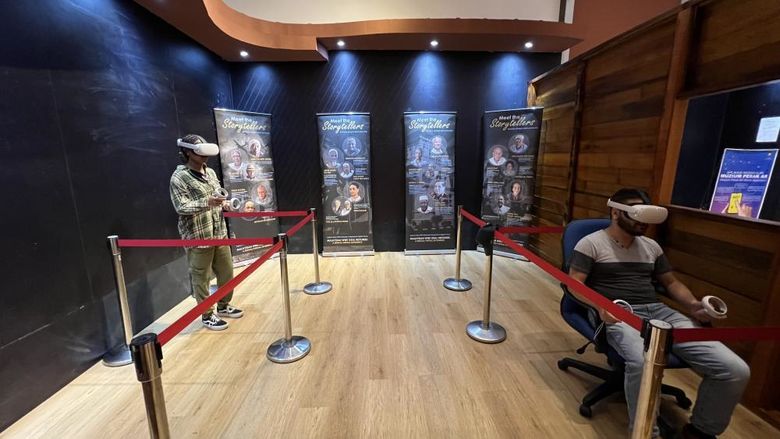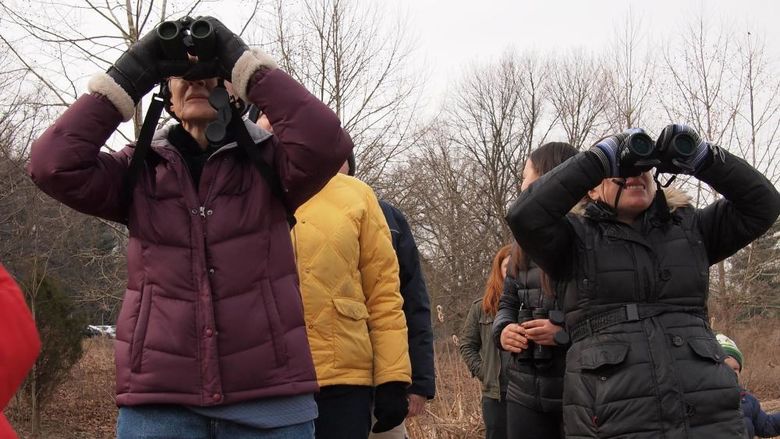
Praveen Veerabhadrappa often works with students on research projects. He and Arizona Schreck, a senior kinesiology major, have worked together on a variety of projects including studying heart rate variability using wearable devices.
WYOMISSING, Pa. — Praveen Veerabhadrappa, associate professor of kinesiology at Penn State Berks, was part of a panel of 43 scientists from 18 countries convened by the International Society of Hypertension (ISH) College of Experts to review current research on new directions in hypertension prevention and develop recommendations that individuals can apply to their own lives. The resulting paper was published in the Journal of Hypertension, the official journal of both ISH and the European Society of Hypertension. Since publishing in September, the paper has received international media attention, including from the BBC and Indian Express.
Veerabhadrappa spoke with Penn State News about the work and what people can do to help prevent hypertension.
Q: Why should people be concerned about hypertension?
Veerabhadrappa: Hypertension, a condition in which blood pressure is persistently increased, is the leading risk factor for heart disease, the main cause of death worldwide, and other serious health issues. Hypertension affects more than 1.4 billion people and contributes to more than 28,000 deaths each day. While initially, it does not cause any symptoms, if left untreated it can also lead to stroke, heart attack, kidney disease, vision loss and dementia.
Q: What is your area of research regarding hypertension?
Veerabhadrappa: My current research focuses on incorporating ambulatory blood pressure monitoring to gauge a subject’s blood pressure for a 24-hour period. This is what we call “real-world blood pressure,” and this technique is used widely in Europe. My student research group works in the Penn State Berks Cardiovascular Exercise Physiology Lab to study the cardio-metabolic effects of sedentary behavior using wearables, such as a Fitbit or an Apple Watch, to track activity and sleep among students at Penn State Berks. We have seen that most college students don’t tend to meet the physical activity guidelines set by American College of Sports Medicine. We are also noticing that inactivity levels, inadequate sleep and mental health issues have compounded after the recent global pandemic.
Q: What were your contributions to the ISH paper on hypertension?
Veerabhadrappa: I was specifically tasked to contribute to the physical activity section based on my expertise in cardiovascular exercise physiology. We know that an inactive lifestyle can lead to high blood pressure. By engaging in regular physical exercise and limiting sedentary behavior, many can efficiently manage blood pressure. It is important to increase aerobic exercise to meet the current recommendation of 150 to 300 minutes of physical activity per week performed at moderate intensity, such as brisk walking, or 75 to 150 minutes at vigorous intensity, such as jogging. The aerobic exercise must be combined with resistance or muscle strengthening exercise on at least two nonconsecutive days each week. In addition, incidental activity, defined as unplanned movement that we do over the course of the day — such as stair climbing, active housework, carrying groceries or playing with children — is separate from intentional exercise and has a lot of health benefits. Such brief busts of activities that do not require extra time commitments or any special equipment can be easily embedded into our daily life.
This experience was sort of a “practice to theory” approach, as my contribution to this paper ties nicely with my teaching of the current physical activity guidelines and exercise prescription in my “Kinesiology 456 Physical Fitness Appraisal” and “Kinesiology 457 Exercise Prescription and Case Studies” courses. I truly believe that exercise is key to good health and that exercise is the best medicine.
Q: What are some of the key implications of the paper?
Veerabhadrappa: The research indicates that new directions in prevention, in addition to more traditional methods, could be used as an effective first-line defense against hypertension. While physical exercise has been a traditional recommendation, isometric resistance exercise — which involves the static contraction of a muscle without any visible movement in the angle of the joint — also has a preventative effect.
Other lifestyle management recommendations show that stress reduction techniques such as listening to music, mindfulness practice, meditation and yoga should be recommended. People should also be advised to get quality sleep and reduce their exposure to air pollution. The paper highlights these strategies alongside long-standing recommendations to maintain a healthy weight, exercise regularly, minimize sedentary behavior, eat a healthy diet, reduce consumption of salt, stop smoking and limit or stop alcohol consumption.
Developing these daily health habits is a holistic approach to high blood pressure prevention for people across the globe.
Q: Why did you decide to pursue this field of research?
Veerabhadrappa: I was motivated by family members who suffer from hypertension, including my father and grandparents. As a young adult growing up in India, I would often accompany my grandparents to the physician for the condition. I wanted to be on the frontline in the fight against hypertension, so I after completing my undergraduate work, I earned both my master’s and doctoral degrees in exercise physiology at Temple University. Since that time, I have dedicated my professional career to finding ways to help people live longer, healthier lives through exercise.
It has always been my dream to frame health guidelines for physicians in the fight against hypertension. My family is proud of me as these guidelines have the potential for a global impact in our battle against high blood pressure.





